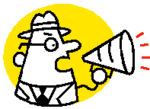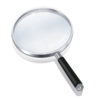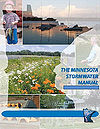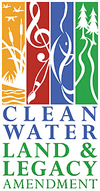
Difference between revisions of "Main Page"
m |
m |
||
| Line 70: | Line 70: | ||
*Maintain my rain garden? > Ch. 12 | *Maintain my rain garden? > Ch. 12 | ||
*Deal with karst geology, tight soils, and potential stormwater hotspots of toxicity? > Ch. 13 | *Deal with karst geology, tight soils, and potential stormwater hotspots of toxicity? > Ch. 13 | ||
| − | *Check that my BMP is suitable based on site conditions or receiving water criteria? > Ch. 7 | + | *Check that my BMP is suitable based on site conditions or receiving water criteria? > Ch. 7--> |
==Overview== | ==Overview== | ||
Throughout the production of the Manual, one singular goal was kept in mind – to produce a useful product that helps the everyday user better manage stormwater. The purpose, goal, vision and tenets were developed by the original [http://www.pca.state.mn.us/index.php/component/option,com_docman/task,doc_view/gid,7330 Stormwater Design Team]. Although stormwater management to control the pollution of receiving waters has been around in earnest for over 30 years in Minnesota, the advent of many new programs means that guidance is needed more than ever. Such programs as the NPDES (National Pollutant Discharge Elimination System) Phase I and II program, the TMDL (Total Maximum Daily Load) program, and strong runoff control programs at the local and watershed levels have all contributed to the need for this information to be compiled in a comprehensive, technically sound document. | Throughout the production of the Manual, one singular goal was kept in mind – to produce a useful product that helps the everyday user better manage stormwater. The purpose, goal, vision and tenets were developed by the original [http://www.pca.state.mn.us/index.php/component/option,com_docman/task,doc_view/gid,7330 Stormwater Design Team]. Although stormwater management to control the pollution of receiving waters has been around in earnest for over 30 years in Minnesota, the advent of many new programs means that guidance is needed more than ever. Such programs as the NPDES (National Pollutant Discharge Elimination System) Phase I and II program, the TMDL (Total Maximum Daily Load) program, and strong runoff control programs at the local and watershed levels have all contributed to the need for this information to be compiled in a comprehensive, technically sound document. | ||
<p>The directive the Manual Sub-Committee received from the SSC was to produce a document that could be used as a single source to guide stormwater managers through the maze of regulations, Best Management Practices (BMPs) designs, models/techniques and terminology that constitute good stormwater management. It does not address the requirements of other non-stormwater related regulatory programs that can have an effect on stormwater. Related to this was the charge to produce a Manual that does not duplicate the many good sources of information already available. Because Minnesota is fortunate enough to have had many additional tools created over the years, the Manual will often forego detailed explanation of a particular element and send the user directly to another resource via electronic linkage or cited reference. These linked resources provide information that Minnesota stormwater managers can put to use in conjunction with this Minnesota Stormwater Manual. The Manual is intended to be flexible, easily updated and responsive to the needs of the Minnesota stormwater community.</p> | <p>The directive the Manual Sub-Committee received from the SSC was to produce a document that could be used as a single source to guide stormwater managers through the maze of regulations, Best Management Practices (BMPs) designs, models/techniques and terminology that constitute good stormwater management. It does not address the requirements of other non-stormwater related regulatory programs that can have an effect on stormwater. Related to this was the charge to produce a Manual that does not duplicate the many good sources of information already available. Because Minnesota is fortunate enough to have had many additional tools created over the years, the Manual will often forego detailed explanation of a particular element and send the user directly to another resource via electronic linkage or cited reference. These linked resources provide information that Minnesota stormwater managers can put to use in conjunction with this Minnesota Stormwater Manual. The Manual is intended to be flexible, easily updated and responsive to the needs of the Minnesota stormwater community.</p> | ||
| − | < | + | |
| + | <!-- | ||
| + | The Stormwater Steering Committee members agreed to support this Manual and relay it to the public. Although all members do not agree with all elements or concepts contained in the Manual, they did support release of the Manual as a constructive tool for use by stormwater professionals, regulators, plan reviewers, and the public. Concepts presented in this Manual are intended to be flexible guidance for users rather than stringent rules. Each stormwater problem is different, so solutions will need to be customized to address this variation. This Manual provides the tools, but the user must provide the ingenuity.</p> | ||
<p>This Manual provides direction and guidance for stormwater management in Minnesota. The Stormwater Steering Committee wants you, through your active use of and feedback on the [[submit Manual]], to help Minnesota reach our vision for stormwater management in Minnesota.</p> | <p>This Manual provides direction and guidance for stormwater management in Minnesota. The Stormwater Steering Committee wants you, through your active use of and feedback on the [[submit Manual]], to help Minnesota reach our vision for stormwater management in Minnesota.</p> | ||
<p>The Manual is intended as a guidance document. It will help users identify and appropriately use the best practices to protect Minnesota’s water resources from adverse impacts associated with stormwater runoff. Some practices in the Manual go beyond today’s requirements, and are so identified. Others help to clarify how and when to use currently accepted practices to meet water quality goals. The Manual looks beyond current practices and addresses special situations such as protection of a trout stream or stormwater management in karst areas. Some practices discussed are designed to address unique site conditions and may not be readily adaptable for across-the-board applications.</p> | <p>The Manual is intended as a guidance document. It will help users identify and appropriately use the best practices to protect Minnesota’s water resources from adverse impacts associated with stormwater runoff. Some practices in the Manual go beyond today’s requirements, and are so identified. Others help to clarify how and when to use currently accepted practices to meet water quality goals. The Manual looks beyond current practices and addresses special situations such as protection of a trout stream or stormwater management in karst areas. Some practices discussed are designed to address unique site conditions and may not be readily adaptable for across-the-board applications.</p> | ||
Revision as of 14:03, 14 February 2014



Welcome to the Minnesota Stormwater Manual website. The Manual is designed to be user-friendly and flexible to guide users directly to the information they need, depending upon the question they need to answer or Best Management Practice (BMP) they need to design. This website was developed in an interactive wiki format to make it easy for the user to get to the subject of interest and to move between subjects.
You can access the Manual Table of Contents by clicking on the link below.
Contents
What's new - Recent updates
To view recent content changes or anticipated changes in the near future, see What's New (left toolber). The What's New page only contains important changes or notifications and will therefore be updated infrequently.
Submitting comments on the website
To submit feedback,scroll down to Help improve this page, located at the bottom of any given page in the website. Type your comments in the text box and submit. We will attempt to provide comments to technical questions. To see responses, click here. By posting, you agree to transparency under these terms.
Acknowledgements
This Manual was initiated by the Minnesota Stormwater Design Team, which evolved into the Minnesota Stormwater Steering Committee (SSC). Manual production was directed by the SSC’s Manual Sub-Committee (MSC). A listing of contributors and participants in the process appears in the Acknowledgements section.
Guidance on use of the website
For new users of this website, we have provided Guidance on how to use this website and the Manual.
Overview
Throughout the production of the Manual, one singular goal was kept in mind – to produce a useful product that helps the everyday user better manage stormwater. The purpose, goal, vision and tenets were developed by the original Stormwater Design Team. Although stormwater management to control the pollution of receiving waters has been around in earnest for over 30 years in Minnesota, the advent of many new programs means that guidance is needed more than ever. Such programs as the NPDES (National Pollutant Discharge Elimination System) Phase I and II program, the TMDL (Total Maximum Daily Load) program, and strong runoff control programs at the local and watershed levels have all contributed to the need for this information to be compiled in a comprehensive, technically sound document.
The directive the Manual Sub-Committee received from the SSC was to produce a document that could be used as a single source to guide stormwater managers through the maze of regulations, Best Management Practices (BMPs) designs, models/techniques and terminology that constitute good stormwater management. It does not address the requirements of other non-stormwater related regulatory programs that can have an effect on stormwater. Related to this was the charge to produce a Manual that does not duplicate the many good sources of information already available. Because Minnesota is fortunate enough to have had many additional tools created over the years, the Manual will often forego detailed explanation of a particular element and send the user directly to another resource via electronic linkage or cited reference. These linked resources provide information that Minnesota stormwater managers can put to use in conjunction with this Minnesota Stormwater Manual. The Manual is intended to be flexible, easily updated and responsive to the needs of the Minnesota stormwater community.

